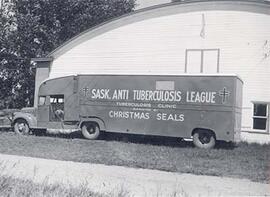Charles Dunning was born July 31, 1885, in Leicestershire, England. He came to Canada to farm in 1902 when he was 16, penniless, with little formal education, and no knowledge of agriculture. He spent a year working as a farm labourer around Yorkton before establishing a homestead near Beaverdale and eventually formed a Farming partnership with his father. He married Ada Rowlatt in 1913 and they had two children.
Dunning was disillusioned with the treatment of farmers and became involved with the Territorial Grain Growers Association, and later with the Saskatchewan Grain Growers Association (SGGA) local. A natural speaker, Dunning was elected district director at the 1910 SGGA convention in Prince Albert and vice-president in 1911. He was charged with investigating the country elevator system in Saskatchewan and different grain-handling options to remedy faults in the current system. His report led to the establishment of the Saskatchewan Co-operative Elevator Company. Dunning was appointed to the board of directors of the co-op and was selected its first general manager. Within four years the co-op became the largest grain-handling company in the world. By 1916, the co-op had built 230 elevators and handled over 28 million bushels of various crops. During this time Dunning served on two Royal Commissions dealing with Saskatchewan agriculture. The Grain Market Commission had little lasting influence but the Agricultural Credit Commission eventually led to government experiments in farm credit during Dunning's later political career.
In 1916 Premier Walter Scott was suffering from ill health and his government was under siege in a corruption scandal. Scott resigned and Regina MP William Martin took over as Premier. He asked Dunning to come into government as Provincial Treasurer for his business expertise and to bolster the Liberal Party's ties to the farm movement. Dunning won a by-election in the constituency of Kinistino by acclamation. In 1919, he was given added responsibility for the Department of Agriculture and he expanded the duties and responsibilities of the Labour Bureau. He used the bureau, created in 1911, to expand Saskatchewan's resource base. Dunning promoted the first commercial extraction of sodium sulfate reserves, established the first experimental Coal plant near Estevan, and undertook the first extensive prospecting for Mineral Resources in northern Saskatchewan.
The Saskatchewan Liberals officially severed ties with the unpopular federal party to avoid the creation of a farmers' party in Saskatchewan. Premier Martin later openly supported federal Liberal candidates in the 1921 federal election, upsetting many in the farmers' movement. A senior Minister resigned and with the SGGA openly discussing the option of forming a third party, Martin's authority was undermined and he resigned. The Liberals chose Dunning as Premier to reduce agrarian unrest. Dunning met with the SGGA directly to convince them that he still represented farmers and was not Prime Minister Mackenzie King's pawn. A series of provincial by-elections resulted in Liberal victories over independent progressive candidates. In 1924 the SGGA rescinded their call for a new farmers' party and the Liberals won the 1925 election. As the federal Progressive Party began to wane, Dunning became more actively involved in federal politics and was eventually able to re-establish formal ties between the provincial and federal levels of the Liberal party.
As Premier, Dunning's main concern was the falling price of Wheat due to the post-war depression. He supported farmers in their opposition to the abolishment of the Canadian Wheat Board by the federal government and worked for its reestablishment. Dunning tentatively supported the idea of voluntary pooling. After a rough start, the Saskatchewan Wheat Pool was established in 1924. The Wheat Pool then sought to buy the Saskatchewan Co-operative Elevator Company, a move that was supported by Dunning, who passed legislation allowing the sale to take place. This proved to be his last act as Premier.
Dunning was invited to become Saskatchewan's representative in the federal Cabinet and won a by-election in Regina in March 1926. The successive Liberal and Conservative minority governments fell and in September 1926 Dunning was re-elected in the general election. Dunning was appointed Minister of Railways and Canals in the Liberal majority government. He was instrumental in the construction of the Hudson's Bay Railway with Churchill as its terminus. In 1929, he was promoted to Minister of Finance until the Liberal defeat in 1930. Dunning suffered a personal defeat in Regina.
In 1930 Dunning returned to the business world until Prime Minster King pressured him to return to government when the Conservatives lost the 1935 election. The MP for Queen's County, PEI resigned, allowing Dunning easy access to the House of Commons. Dunning reassumed his post as Minister of Finance. In 1938, he suffered a heart attack; although his actions were severely limited, he struggled to continue in his post, but finally resigned in July 1939. He went to England to recuperate but returned to Canada just before World War II.
Dunning was appointed chair of the National War Loans Committee, which raised money for the war effort. He also was named chair of Allied Supplies Limited, the company established by the federal government to administer and bolster production of munitions and explosives for the British government. He was appointed chancellor of Queen's University and continued at this post until his death. After the war Dunning continued his connection with the business community, serving on the board of directors of several companies. Although he had interests in several Saskatchewan farms, Dunning retired to Montreal. He usually returned to Regina once a year until his death. He died October 1, 1958.

